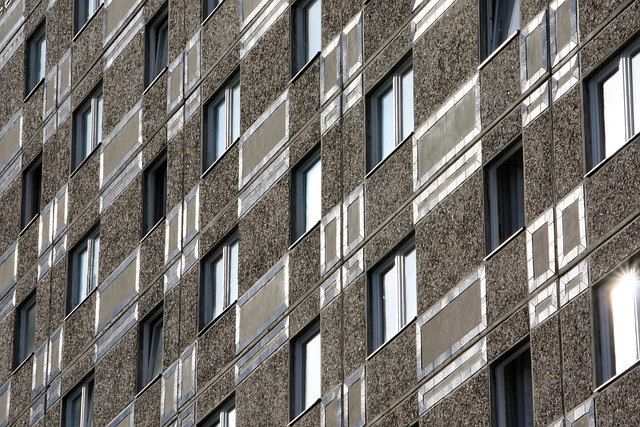Category: Top University Cities for Student Rentals: Pros and Cons
Top University Cities for Student Rentals: Pros and Cons
Introduction
In the dynamic landscape of higher education, the choice of a city where students can live and study plays a pivotal role in their overall experience. “Top University Cities for Student Rentals” refers to metropolitan areas that offer vibrant, affordable, and supportive environments for students, particularly those attending nearby universities. This article delves into the multifaceted world of student rentals within these cities, exploring the numerous advantages and potential drawbacks that students, educators, and policymakers alike should be aware of. By examining various aspects, from economic benefits and technological innovations to policy frameworks and community dynamics, we aim to provide a comprehensive understanding of this critical aspect of urban life.
Understanding Top University Cities for Student Rentals: Pros and Cons
“Top University Cities for Student Rentals: Pros and Cons” encompasses several key elements. Firstly, it identifies cities with a significant concentration of universities, ranging from prestigious research institutions to diverse community colleges. These urban centers attract students from around the globe, contributing to a rich cultural tapestry within their boundaries. The focus then shifts to rental housing options tailored to students’ needs, including shared accommodations, apartments, and homestays.
Historically, the concept has evolved in response to the growing trend of urbanization and the demand for accessible, high-quality education. As universities expanded and diversified, so did the need for supportive urban environments. Over time, certain cities have emerged as global hubs for higher education, fostering vibrant communities where students can thrive academically, socially, and culturally.
This phenomenon is of great interest to researchers, urban planners, and policymakers due to its significant impact on local economies, real estate markets, and community development. Understanding the pros and cons of these cities is essential for creating sustainable and inclusive environments that cater to the diverse needs of students from all backgrounds.
Global Impact and Trends
The international influence of top university cities is profound, shaping global education trends and attracting significant investment. Cities like London, Paris, Berlin, and Tokyo have long been recognized as cultural and academic powerhouses, drawing students from around the world. According to a 2021 report by the International Student Policy Network (ISPN), over 5 million international students were enrolled in higher education institutions worldwide, with many choosing to reside in these vibrant urban centers.
Key trends shaping this landscape include:
-
Urbanization of Education: The trend towards consolidating educational institutions in urban areas continues to grow, fueled by the availability of resources, research opportunities, and diverse cultural experiences.
-
Global Competition: Cities compete aggressively for top universities and students, often through strategic investments in infrastructure, research facilities, and student support services.
-
Digital Transformation: The rise of online learning has had a mixed impact on student rental markets. While it may reduce the need for on-campus housing, it also opens opportunities for remote students to live in these cities, boosting demand.
-
Sustainability Focus: Many university cities are embracing sustainable practices, influencing housing preferences among students. Eco-friendly buildings and green spaces are becoming essential amenities.
Economic Considerations
The economic aspects of top university cities for student rentals are multifaceted, impacting local markets and global investment patterns. These urban areas often experience:
-
Real Estate Boom: The demand for student housing can drive up property prices and rents, benefiting landlords but potentially making living in these cities less affordable for students on limited budgets. A 2019 study by the National Union of Students (NUS) in the UK revealed that rising rent costs were a significant concern for students, particularly those from lower-income families.
-
Economic Diversification: Universities contribute to local economies through research and development, tourism, and job creation. This economic diversification can lead to increased investment in infrastructure and services, including housing, transportation, and entertainment, ultimately benefiting both residents and students.
-
Investment Opportunities: The presence of a large student population attracts investors looking to capitalize on the growing demand for rental properties. This influx of investment can stimulate local economies but may also contribute to market volatility and gentrification, pushing up living costs.
Technological Advancements
Technology plays a transformative role in shaping the student rental experience within top university cities. Notable advancements include:
-
Online Property Platforms: Digital platforms like Airbnb, Booking.com, and specialized student housing apps have revolutionized how students find and book accommodations. These platforms offer convenience, a wide range of options, and often competitive prices. However, they also raise concerns about the impact on local rental markets and the quality of student housing experiences.
-
Smart Homes and Buildings: The integration of smart technology in student accommodations enhances security, energy efficiency, and connectivity. Smart locks, automated lighting, and energy monitoring systems are becoming common features, improving the overall living experience for students.
-
Virtual Reality (VR) Tours: VR technology allows prospective students to virtually tour university cities and specific accommodation options, providing a realistic preview of what life there will be like. This can aid in decision-making and attract students who may not otherwise consider these locations.
Policy and Regulation
The development and management of student rentals within top university cities are governed by various policies and regulations:
-
Zoning and Land Use: Local zoning laws dictate the types of developments allowed in specific areas, influencing the availability and distribution of student housing. Many cities have implemented strategies to ensure a balanced mix of residential, commercial, and institutional lands.
-
Rental Regulation: Policies regarding rent control, security deposits, and eviction processes vary widely across cities. Some regions have strict rent regulations to protect tenants, while others offer more flexibility for landlords. These policies can impact the cost of living for students and the overall rental market dynamics.
-
Licensing and Quality Standards: Many cities require student housing providers to obtain licenses and meet specific safety, health, and sanitation standards. These regulations ensure a minimum level of quality and accountability in the rental sector.
-
Housing Affordability Initiatives: To address rising rent costs and housing insecurity among students, some municipalities have implemented affordable housing programs, subsidies, or partnerships with universities to provide more accessible accommodations.
Challenges and Criticisms
Despite its numerous benefits, the concept of top university cities for student rentals faces several challenges:
-
Affordability: The rising cost of living and rental prices in these cities can make it difficult for students from lower-income backgrounds to secure suitable housing. This disparity may lead to informal housing arrangements or increased financial strain on students.
-
Gentrification: High demand for student housing can contribute to gentrification, pushing out long-time residents and local businesses as property values increase. Balancing the needs of students and existing communities is a complex challenge.
-
Noise and Social Issues: Bustling university cities can experience noise complaints from neighbors, late-night social activities, and potential safety concerns. Managing these issues while fostering a vibrant campus environment requires careful planning and community engagement.
-
Quality of Housing: Ensuring the quality and safety of student accommodations is essential but challenging. Overcrowding, poor maintenance, and lack of oversight can negatively impact students’ well-being.
Actionable Solutions: To address these challenges:
- Cities can collaborate with universities to develop affordable housing initiatives, such as providing subsidies or partnering with local developers to create mixed-income communities.
- Implementing noise ordinances tailored to student neighborhoods and promoting responsible late-night activities can mitigate social issues.
- Regular inspections and stricter regulations for student housing providers can enhance accommodation quality.
- Community engagement programs that involve students, residents, and local businesses can foster a sense of belonging and address concerns early on.
Case Studies
Amsterdam, Netherlands: A Model for Sustainable Student Housing
Amsterdam has emerged as a leader in sustainable and inclusive student housing. The city’s “Student House Program” aims to provide affordable, high-quality housing while promoting social integration. Key features include:
- Mixed-Income Communities: The program encourages the development of mixed-income student housing complexes, ensuring that students from diverse economic backgrounds can live together.
- Community Spaces: Each residence includes shared common areas designed to foster social interaction and community building among residents.
- Sustainable Design: All new student housing developments must adhere to strict environmental standards, incorporating energy-efficient technologies and eco-friendly materials.
- Collaboration with Universities: The city works closely with universities to identify their housing needs, ensuring a steady supply of appropriate accommodations.
This approach has resulted in a vibrant student community while addressing issues of affordability and sustainability. Amsterdam’s model demonstrates how top university cities can create supportive environments that cater to diverse student populations.
Berlin, Germany: Embracing Diversity and Digital Solutions
Berlin is renowned for its open-minded and diverse culture, which extends to its student rental market. The city offers:
- Flexible Rental Options: Digital platforms and apps have made it easier for students to find short-term or shared accommodations, providing flexibility and affordable options.
- International Student Support: Berlin actively promotes itself as a destination for international students, offering language courses, cultural events, and support services to facilitate their transition.
- Community Engagement: The city encourages student involvement in local community projects, fostering a sense of belonging and contributing to social cohesion.
- Affordable Public Transportation: Berlin’s efficient public transit system allows students to navigate the city without relying heavily on private transportation, reducing traffic congestion and parking demands.
These initiatives have made Berlin an attractive choice for students seeking a vibrant, culturally rich environment that supports their academic pursuits.
Future Prospects
The future of top university cities for student rentals is filled with both opportunities and challenges:
-
Emerging Markets: Cities in Asia, Africa, and South America are expected to experience significant growth in higher education enrollment, leading to increased demand for student housing in these regions.
-
Sustainability and Green Spaces: As environmental consciousness grows, university cities will continue to prioritize sustainable practices and green spaces within urban environments. Smart cities initiatives will further enhance the efficiency and livability of student accommodations.
-
Digital Transformation: The digital shift will continue to reshape student housing experiences. Virtual reality tours, smart homes, and online community platforms will become even more prevalent, offering enhanced convenience and connectivity.
-
Affordability and Inclusion: Addressing affordability and inclusivity will remain at the forefront of policy discussions. Cities may explore innovative solutions, such as cooperative housing models, public-private partnerships, or micro-housing initiatives, to provide diverse housing options for students.
-
Community Engagement: Building strong connections between universities, local communities, and students will be crucial for fostering a sense of belonging and addressing social issues. Collaborative efforts can lead to more sustainable and harmonious urban environments.
Conclusion
“Top University Cities for Student Rentals: Pros and Cons” is a complex yet critical aspect of urban life that significantly impacts the higher education experience. These cities offer vibrant, diverse communities, affordable housing options, and numerous opportunities for students. However, they also face challenges related to affordability, gentrification, social dynamics, and housing quality.
By examining global trends, economic considerations, technological advancements, policies, and successful case studies, we gain valuable insights into the multifaceted nature of these urban environments. As cities continue to evolve and adapt to changing demands, a balanced approach that addresses both student needs and community well-being will be essential for creating sustainable top university cities.
FAQ Section
Q: How do student rentals impact local economies?
A: Student rentals contribute to local economies through increased consumer spending, job creation in the hospitality and service sectors, and long-term investment in infrastructure and real estate.
Q: What are some common challenges faced by students in top university cities?
A: Common challenges include high cost of living, affordable housing availability, managing social dynamics with locals, and navigating unfamiliar urban environments.
Q: How can universities support student housing initiatives?
A: Universities can collaborate with local governments and developers to create dedicated student housing areas, provide financial aid for housing, offer on-campus accommodations, and promote community engagement programs.
Q: Are there any global best practices for student housing in university cities?
A: Yes, several cities like Amsterdam, Berlin, and Tokyo are recognized for their inclusive housing policies, sustainable developments, digital solutions, and successful community integration strategies.
Q: What role does technology play in the future of student rentals?
A: Technology will continue to shape student housing experiences through virtual reality tours, smart homes, online rental platforms, and enhanced connectivity, offering both opportunities for convenience and challenges related to data privacy and digital inequality.
* * * * * * * * * * * * * * * * * * * * * * * * * * * * *
Student Housing: Benefits and Challenges in College Towns

Student housing in college towns offers affordable amenities and social opportunities but faces chal…….
Vibrant College Towns: Pros, Cons, and Top Financial Tips

Living in top college towns offers a vibrant social and cultural scene fueled by diverse populations…….
Unraveling Student Housing: Pros, Cons, & Market Secrets

The student housing market offers benefits like affordable campus proximity, academic advantages, an…….
Top Student Rental Markets: Dynamic Cities for Affordable Living

Vibrant student rental markets offer diverse housing from dorms to modern apartments, enhancing univ…….
Student Housing Pros & Cons: Top Rental Cities for Students

Student housing offers advantages like affordability, independence, community, and convenience but f…….
Uncovering Student Rental Markets in Best University Cities

Understanding demographic trends is crucial for navigating competitive rental markets in best univer…….
Evaluating Housing Markets in Best University Cities

Understanding the dynamic rental market in best university cities is vital for students and property…….
Student Housing: Pros, Cons & Factors for Top College Towns

Location and cost are key factors in student housing pros and cons. Proximity to campus offers benef…….

